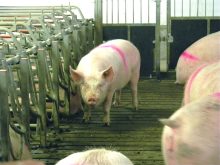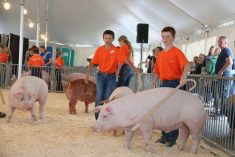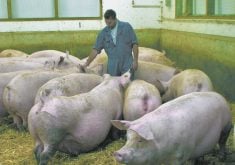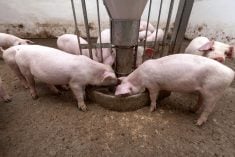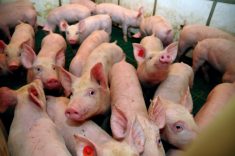Buyers are aggressively looking to purchase Canadian pigs, despite the increased risk of tariffs when exporting pigs to the United States.
The protein market has tightened in the U.S., and American buyers had a booth and were circulating looking for Canadian finishing pigs and weaners at the Ontario Pork Congress in Stratford last week.
Why it matters: High prices and strong demand can help mitigate the risk of geopolitics in the hog market.
A sharp increase in hog prices has created optimism in the market place. In January, Ontario average price for hogs per hundred kilogram dressed weight as reported by Ontario Pork was around $250.
Read Also
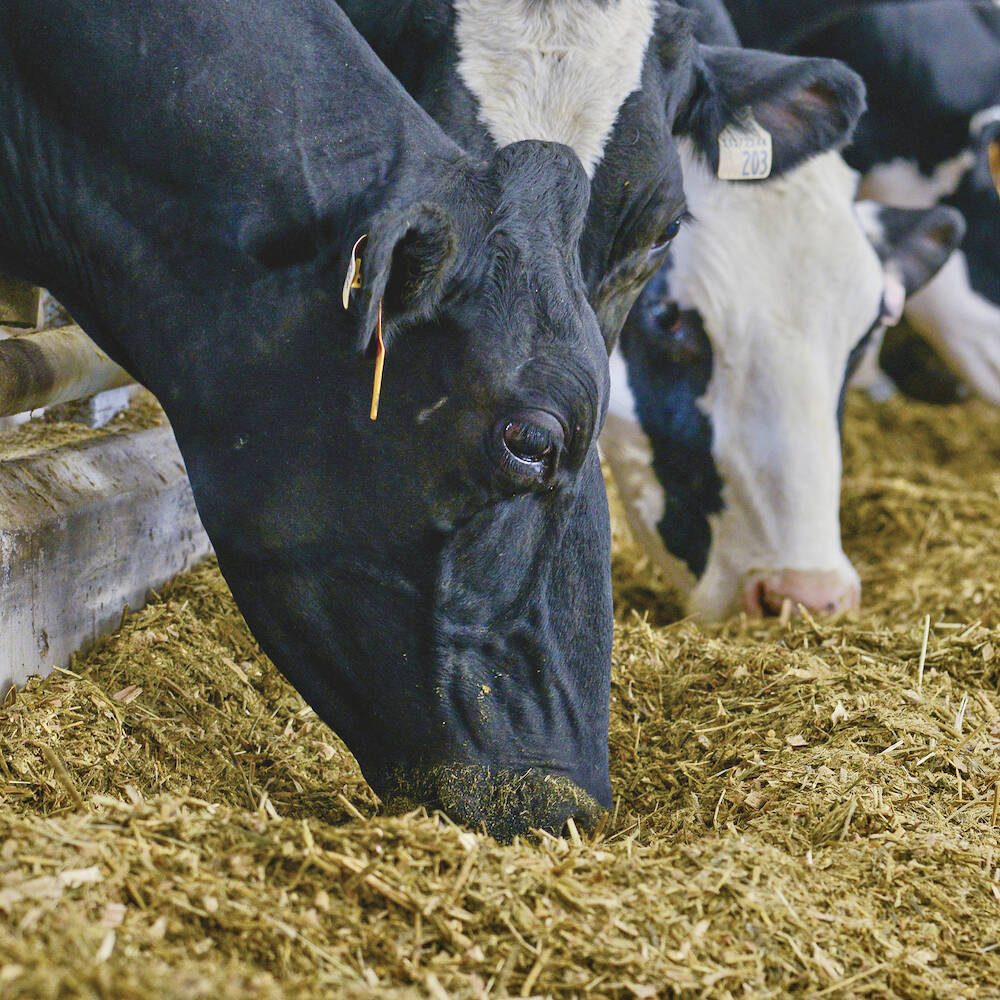
Byproducts with benefits for dairy cows
Local food processors can be a source of financially advantageous byproducts for dairy cows, but make sure the ration is properly balanced.
As of mid-June it was $284.
Blair Cressman, director of sales with Ontario Pork is used to looking for homes for pigs in the marketplace for processing, but he now has people calling him looking for pigs.
“It’s a good spot to be in and we’re happy for the producers. Some of the producers have laboured through and we’re on the other side of some pretty significant challenges,” he said.
The seasonal high for the pork markets usually hits in late June, but the pork price shows no sign of dropping yet.
That’s because the U.S. hog sector contracted in the most recent pork market downturn and it hasn’t recovered yet, while consumers continue to be willing to pay more for meat.
Large processors also own the hogs and the barns in the United States including Smithfield, Tyson and JBS. Cressman says they’ve struggled to grow and to access capital. Smithfield became a public company in January, with an initial public offering (IPO) valuing the company at US$7.95 billion. JBS also completed its IPO on June 13, 2025, and is now listed on the New York Stock Exchange.
Disease pressure in the United States and much of Canada also continues to tamp down the number of pigs coming to market.
“That also leads to fewer pigs locally, but also the demand we’re seeing at the show this year, lots of interest from packers in the eastern corn belt, looking to secure more volumes showing up here,” says Cressman.
The J.H. Routh Packing Company in Sandusky, Ohio was represented at the Ontario Pork Congress by Continental Swine Marketing’s Spencer and Jim Long. The plant is 200 kilometres from Detroit and is the closest U.S. packing plant to southern Ontario. The distance to a packer matters when producers have to pay for shipping.
J.H. Routh has operated for more than 100 years and produces the Dairyfield brand of pork products.
It was purchased five years ago by Kalmbach Feeds in the U.S. and is now looking for Canadian hogs, something that hasn’t happened before, says Spencer Long.
Continental Swine Marketing was looking to procure hogs for the plant which sells its processed product in the U.S. and Asia, but doesn’t sell into Canada.
The risk of sending hogs to the U.S. with the Trump administration’s tariff threats isn’t as big of a barrier as it was earlier this year.
“I think it’s settled down. That risk is always going to be there for the next three and a half years, but overall I think people seem to be more cautiously optimistic,” says Spencer, who says that the company’s booth at the Pork Congress got people’s attention.
J.H. Routh is offering one-year contracts, although Jim Long says that two-year contracts could be negotiable. Jim, who wrote a well-read hog market commentary when he was CEO of Genesus, a swine genetics company, says people lost a lot of money in the hog business over the past while.
The hog market has a regular cycle, and Jim says people always think the next time will be different.
For now, there’s significant upside in the market, if you have pigs to sell, which Ontario does. Cressman says some pigs are even moving back into Quebec, which recently reduced its herd and placed a covenant on Olymel, its largest processor not to process hogs from outside Quebec.
Other processors, however, are still looking for pigs.
“It’s the pig business. She’s a roller coaster,” Cressman said.





